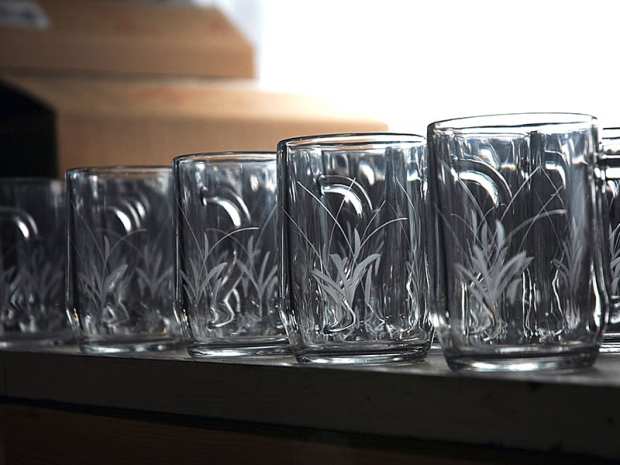When An 110-Year-Old Company Needs A Digital Upgrade

In 1910, Albert Roye installed a glass-cutting machine in a small shed behind his home in Susquehanna, Pennsylvania and founded what he dubbed the Susquehanna Glass Factory. Two years later, his brother Walter joined the family business, which was still located in a shed. After a decade, the business had grown up enough that it moved to a real factory in nearby Columbia, Pennsylvania.
Improbably enough, almost 11 full decades later, Susquehanna Glass is still located in Columbia, Pennsylvania and still run by the Roye family. Walt Rowen, its current owner and CEO, is the grandson of Walter Roye.
The company still specializes in glass, though hand-cutting and etching have given way to more modern methods of sand etching, color screening, laser etching and rotary engraving. But while the methods have changed, the products have remained consistent over time.
These days, the firm mostly specializes in wholesale efforts and working with brands and retailers to develop private-label glass offerings.
But change comes even for brands that have been around for over 100 years – and for Susquehanna Glass, that change needed to come to its back-end packaging and shipping efforts, which were running so far behind the times they had become a liability. With the highly manual process, it simply took too much time to enter, pack and ship items to customers.
Rick Anders, IT manager at Susquehanna Glass, told PYMNTS the company had just started working with TrueCommerce to automate the entire shipping process, when something wonderful (but also terrible) happened: They received a massive order that required over 4,000 units of products per day. To make matters more complicated, the orders needed a specialty shipping label that existed nowhere else in the industry.
“We tried to get it started without having the new program, but the processing time was insane,” Anders said. “To make the shipment work the way our customer wanted it was taking like three minutes to process an order, and there is not enough time in the day to process 4,000 orders that way.”
Suddenly, the company had gone from debating the best rollout to scrambling to get up and running. And quick pivots and changes are not generally the sort of thing that 100+-year-old glass etching operations favor – but it was what the situation required. It was a high-stress transition at first, particularly because of the volume.
“At first, no one was happy,” Anders recalls. “The shippers weren’t happy, no one here was happy. The system has issues, which you will have with a new shipping solution anyway, but [then there was the added] pressure of how many we had to get out. I would say a lot of people were pretty upset in the beginning, but it is balanced out now and everyone is ecstatic.”
The new system is faster and easier to use, Anders noted, but it also lets the firm consider the next phase in its evolution. Thus far, Susquehanna Glass has worked in mostly wholesaling partnerships, but Anders noted they are looking more into the world of direct-to-consumer B2B sales. That wouldn’t have been possible before – not because they couldn’t produce the volume of glass works, but because the process of systematically packing and shipping items was too much of a logistical problem.
That next phase of development is the roadmap by which Susquehanna Glass will navigate its next 100 years in business, Anders pointed out, so it’s important to get it right. That knowledge didn’t necessarily make the transitional phase more fun, but it has made the developments phase more satisfying.
“In our situation, we had to change – no ifs, and or buts,” Anders said. “I would say we definitely go over that hump, and we’re growing.”
